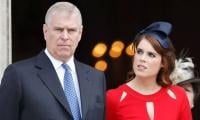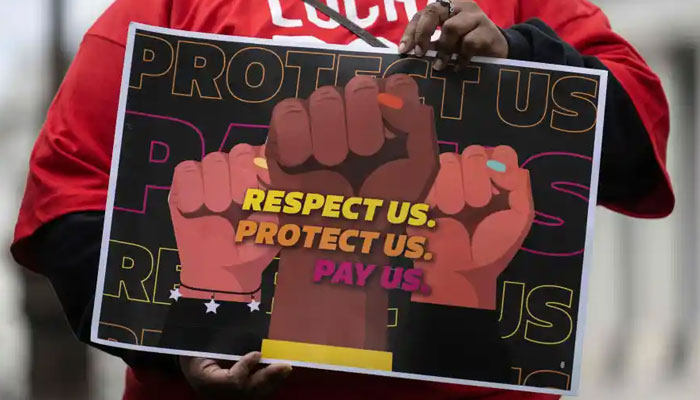US wage growth, once an inflation risk, may be the prop a soft landing needs
WASHINGTON: New wage and labor market data released on Friday bolster what Federal Reserve officials have come to both hope and suspect: That rising worker pay and increased labor supply are helping the U.S. economy grow at a modest pace without fanning the inflationary pressures the Fed is trying to squelch.
Wages last month rose at a 4 percent annual rate, extending a slow decline in the pace of pay increases but still above the 3 percent level policymakers view as consistent with their 2% inflation target.
However alongside a recent jump in worker productivity and a moderation in the average number of hours worked by each employee, labor costs for each unit of output actually fell during the third quarter of the year, muting wage growth as a reason for companies to raise prices even as it left workers with more money to spend.
Improved labor supply, with half a million more people either employed or looking for work last month, has also been cited by Fed and other economists as a way for output to grow without adding to price pressures in the form of firms bidding up wages for a more constrained pool of workers.
In remarks at Spelman College last week Fed Chair Jerome Powell noted while the pandemic-era savings that had been driving consumer demand may be about exhausted, rising pay had picked up the slack.
"As long as unemployment remains low...and wages are moving up above inflation, there's no reason why spending wouldn't continue to hold up," Powell said. The unemployment rate fell to 3.7 percent from 3.9 percent in October, while the 4 percent jump in average hourly pay contrasts with recent annual consumer price increases of around 3.2 percent.
‘Sudden collapse looks unlikely’
The November payrolls report is among the last major data releases before the Fed's Dec. 12-13 policy meeting and helps solidify Fed plans to leave the benchmark interest rate steady at 5.25 percent to 5.5 percent for the third meeting in a row.
Fed attention has increasingly turned to the path of household consumption as key to a "soft landing" from inflation that took root in the aftermath of the pandemic, when wages erupted as workers shied from jobs considered unsafe and bank accounts were flush with government aid spent on goods that stuttering global factories struggled to supply.
The hope for the Fed now is that demand moderates enough to allow inflation to continue slowing without the economy sliding toward recession.
As it stands, households are being buffeted by high interest rates that have caused a recent drop in consumer borrowing - a hit to demand - while ongoing job creation and higher pay provide the offsetting influence of more money in more people's pockets.
“In 2023, we saw a tailwind from consumer spending in the U.S. as a result of the stockpiled savings built up during the pandemic," Daniel McCormack, head of research with Macquarie Asset Management, told reporters on a conference call this week. "Looking ahead to 2024, we expect to see a slowdown in spending - it may not completely fall off a cliff, but with savings depleted we don’t expect the same level of spending to continue."
Indeed consumer spending grew just 0.2 percent in October, and its average growth over the past nine months has returned to the pre-pandemic trend.
Consumer credit grew by $5.2 billion in October, down from around $12 billion the month before. Pantheon Macroeconomics economists Ian Shepherdson and Kieran Clancy said the performance of U.S. consumer credit, including a recent rise in delinquency rates, made them expect a "softening" in consumption only.
"We are not unduly alarmed at this point," they wrote about rising delinquency rates. "The trends in consumer credit supply and demand are consistent with a further softening in real consumption, but a sudden collapse looks unlikely."
‘How long can that continue’That is an outcome the Fed would welcome. Officials have at times struggled to reconcile what they think the economy needs - slower wage and job growth, less overall demand, and even a modest rise in the unemployment rate - with the common-sense interpretation of more money and more jobs as good things.
Some analysts are skeptical of where things are heading, and argue that the pace of wage growth may still require higher unemployment for inflation to continue to fall.
Data compiled by the Atlanta Fed, for example, estimates that as of October people who switched jobs were still commanding wage increases of 6.6 percent, far above the roughly 4 percent seen before the pandemic, and a possible concern even as the rate at which workers are shuffling among positions has declined.
Torsten Slok, chief economist at Apollo Global Management, recently estimated that wage growth was "sticky" and lodged between 4 percent and 5 percent, enough for Fed officials to conclude "that a higher unemployment rate is needed to get wage inflation down to levels consistent with the Fed’s 2 percent inflation target."
After next week's meeting and Powell's press conference, it will become clearer if he sees that as the case. But at the end of the Fed's last two-day session he suggested that, for now, the wheels are turning in a good way - with wages rising enough to sustain spending and overall economic growth, even as changes elsewhere in the economy allow inflation to continue to fall.
"The dynamic has been really strong job creation with now wages that are higher than inflation...and that raises real disposable income, and that raises spending, which continues to drive more hiring," Powell said at his Nov. 1 press conference. "It has been good, and the thing is, we’ve been achieving progress on inflation in the middle of this...The question is, how long can that continue?"
-
 Bruce Springsteen Reveals Singer He Finds To Be Greatest Rock And Roll Voice
Bruce Springsteen Reveals Singer He Finds To Be Greatest Rock And Roll Voice -
 Ben Affleck Recalls 'throwing Up' During 'Armageddon's Final Scene
Ben Affleck Recalls 'throwing Up' During 'Armageddon's Final Scene -
 Kevin Costner Marks 71st Birthday With Decades-old Throwback Photos
Kevin Costner Marks 71st Birthday With Decades-old Throwback Photos -
 Why Royal Lodge Fell Into Disarray Under Andrew: Insider Exposes Loophole
Why Royal Lodge Fell Into Disarray Under Andrew: Insider Exposes Loophole -
 Hoda Kotb 'so Proud' As Today 'magic Reignites' With Sheinelle Jones
Hoda Kotb 'so Proud' As Today 'magic Reignites' With Sheinelle Jones -
 Kate Middleton Avoids Nanny Involvmenet In Prince George Matters
Kate Middleton Avoids Nanny Involvmenet In Prince George Matters -
 Colin Jost Jokes About Scarlett Johansson Losing Highest-grossing Actor Crown To Zoe Saldana
Colin Jost Jokes About Scarlett Johansson Losing Highest-grossing Actor Crown To Zoe Saldana -
 ‘Traitor’ Prince Harry Has ‘spooked’ His Family: ‘He Has To Pay A Price Of Re-entry’
‘Traitor’ Prince Harry Has ‘spooked’ His Family: ‘He Has To Pay A Price Of Re-entry’ -
 Andrew’s Daughter Princess Eugenie Sparks Seismic Change After Stepping Away
Andrew’s Daughter Princess Eugenie Sparks Seismic Change After Stepping Away -
 Meghan Markle Shares NEW Photos From Day Out At The Zoo
Meghan Markle Shares NEW Photos From Day Out At The Zoo -
 'Game Of Thrones' New Series Returns To 'home'
'Game Of Thrones' New Series Returns To 'home' -
 Prince Harry Touches Down In Heathrow For The Witness Box
Prince Harry Touches Down In Heathrow For The Witness Box -
 Harry’s Turmoil Turns To Agony Over Meghan Markle’s Hope: ‘Time Will Tell If He’ll Bare It’
Harry’s Turmoil Turns To Agony Over Meghan Markle’s Hope: ‘Time Will Tell If He’ll Bare It’ -
 Reese Witherspoon Jokes About Jennifer Garner’s 'dark Side'
Reese Witherspoon Jokes About Jennifer Garner’s 'dark Side' -
 'Lion King' Co-director Roger Allers Breathes His Last At 76
'Lion King' Co-director Roger Allers Breathes His Last At 76 -
 Prince Harry’s Security ‘isn’t Just For His Family’: Expert Rewires Security Woe
Prince Harry’s Security ‘isn’t Just For His Family’: Expert Rewires Security Woe




